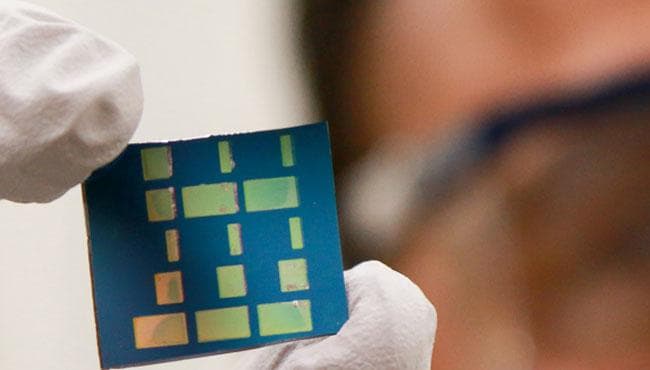First Ever Stable P-type 2D Semiconductor Material Could Lead To Much Faster Chips
In what could be called a magic in the field of engineering materials; researchers at University of Utah led by Indian origin author, Ashutosh Tiwari have discovered first stable P-type 2D semiconductor material ever in existence. The semiconductor made of the elements tin and oxygen, or tin monoxide (SnO), is a layer of 2D material only one atom thick, allowing electrical charges to move through it much faster than conventional 3D materials such as silicon.

The novel research field of 2D materials has opened up only about five years ago, consisting of development of materials one layer thick, of just one or two atoms rendering them to be able to move in a single layer and consequently be much faster. Transistors and other components used in electronic devices currently are made of 3D materials such as silicon and consist of multiple layers on a glass substrate in which electrons bounce around inside the layers in all directions.
The new material could be used in transistors, which serves as the lifeblood of all electronic devices such as computer processors, graphics processors in desktop computers and mobile devices. It can successfully lead to the manufacturing of transistors that are smaller and faster than those in use today.
The more transistors packed into a single chip, the more powerful the processor can become, almost 100 times faster than regular devices predict the researchers. Owing to movement of electrons in one layer, there will be less friction, meaning the processors will not get as hot as normal computer chips. They also will require much less power to run, a boon for mobile electronics that have to run on battery power.
It could be especially important for medical devices such as electronic implants that would run longer on a single battery charge. While the other 2D materials discovered earlier as graphene, molybdenum disulphide, borophene etc allowed the movement of only N-type, or negative electrons; Tin monoxide is the first stable P-type material allowing the movement of positive electrons as well to facilitate the development of an electronic device. The breakthrough is expected to lead much speedier computers and smartphones which consume a lot less power.
Paper describing the research was published in the journal, Advanced Electronic Materials.
Source: Engineering material magic | UNews
The novel research field of 2D materials has opened up only about five years ago, consisting of development of materials one layer thick, of just one or two atoms rendering them to be able to move in a single layer and consequently be much faster. Transistors and other components used in electronic devices currently are made of 3D materials such as silicon and consist of multiple layers on a glass substrate in which electrons bounce around inside the layers in all directions.
The new material could be used in transistors, which serves as the lifeblood of all electronic devices such as computer processors, graphics processors in desktop computers and mobile devices. It can successfully lead to the manufacturing of transistors that are smaller and faster than those in use today.
The more transistors packed into a single chip, the more powerful the processor can become, almost 100 times faster than regular devices predict the researchers. Owing to movement of electrons in one layer, there will be less friction, meaning the processors will not get as hot as normal computer chips. They also will require much less power to run, a boon for mobile electronics that have to run on battery power.
It could be especially important for medical devices such as electronic implants that would run longer on a single battery charge. While the other 2D materials discovered earlier as graphene, molybdenum disulphide, borophene etc allowed the movement of only N-type, or negative electrons; Tin monoxide is the first stable P-type material allowing the movement of positive electrons as well to facilitate the development of an electronic device. The breakthrough is expected to lead much speedier computers and smartphones which consume a lot less power.
Paper describing the research was published in the journal, Advanced Electronic Materials.
Source: Engineering material magic | UNews
Replies
You are reading an archived discussion.
Related Posts
Scientists at the University of Southampton have made a revolutionary breakthrough in the area of digital data storage. The new 5D disc that they have fabricated is capable of storing...
Sony has launched a new ultra portable mobile projector in India called the MP-CL1. This smartphone sized short throw projector can turn any surface into a viewing experience. It’s no...
Bringing the window of Astrophysics at doorstep, a portable radio telescope has been designed and constructed by a team of students from College of Engineering in Thiruvananthapuram funded and supported...
The Khronos Group, an American non-profit member funded industry consortium based in Beaverton, Oregon, has released Vulkan 1.0 in what is being seen as a combined effort by the biggest...
In context to Java programming,
Is "reference variable of a class" same as "an object of that class"?
Also for a code like
class Sample
{
int a, b;
public...
